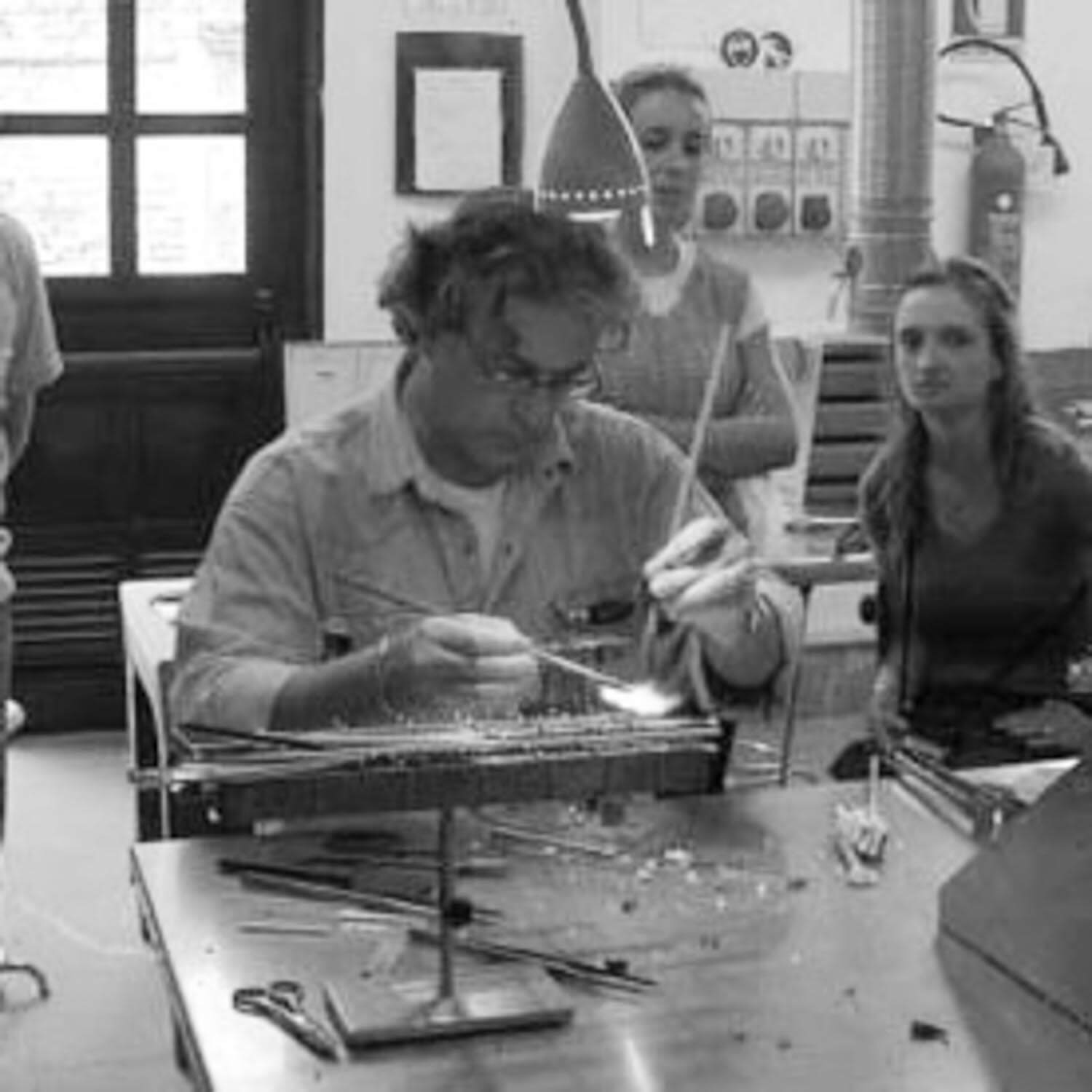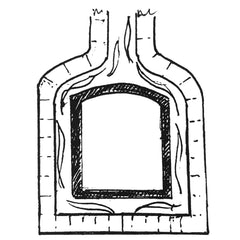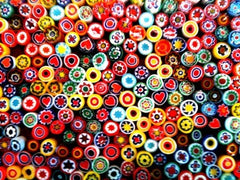
Letteraly Lampwork. It consists in melting the glass canna by blowtorch.
This technique allows to create detailed and accurate shapes. It was used by the Conterie to make the classical Venetian beads, the murrina compositions or the simple monochrome pierced beads. In the past the melting was executed by oil lamp.
Lampworking is a type of glasswork where a torch or lamp is primarily used to melt the glass. Once in a molten state, the glass is formed by blowing and shaping with tools and hand movements. It is also known as flameworking or torchworking, as the modern practice no longer uses oil-fueled lamps.
Although lack of a precise definition for lampworking makes it difficult to determine when this technique was first developed, the earliest verifiable lampworked glass is probably a collection of beads thought to date to the fifth century BC.
Lampworking became widely practiced in Murano, Italy in the 14th century. In the mid 19th century lampwork technique was extended to the production of paperweights, primarily in France, where it became a popular art form, still collected today. Lampworking differs from glassblowing in that glassblowing uses a furnace and glory hole as the primary heat source, although torches are also used.
Early lampworking was done in the flame of an oil lamp, with the artist blowing air into the flame through a pipe. Most artists today use torches that burn either propane or natural gas, or in some countries butane, for the fuel gas, mixed with either air or pure oxygen as the oxidizer.
Many hobbyists use MAPP gas in portable canisters for fuel.
Lampworking is used to create artwork, including beads, figurines, marbles, small vessels, Christmas tree ornaments, and much more.
It is also used to create scientific instruments as well as glass models of animal and botanical subjects.
It is worth mentioning Leopold Balaschka who with his son were probably the most virtuous masters of this technique.
Today some of the best Murano lampworkers are Lucio Bubacco , Mauro Vianello , Cristiano Balbi , Stefano Busato , Igor Balbi and many others.



